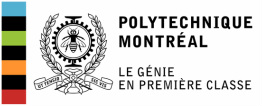Dilek IŞIK AKCAKAYA, Ph.D.

Dilek IŞIK AKCAKAYA
Interests:
Semiconductor Technologies
Materials Science
Semiconductor Technologies
Materials Science
EXPERIENCE:
Post-doctoral researcher at Ecole Polytechnique de Montréal in collaboration with Teledyne-Dalsa at MiQro Innovation Collaborative Center (C2MI), Bromont, QC, July 2013- present
Position in Nano and Hybrid Materials Laboratory with Prof. Oussama Moutanabbir, Department of Engineering Physics
Wafer level bonding and packaging
Team member in research and development of wafer level bonding (8 inch (200 mm) wafers)
Tasks:
Experienced in design of experiments (DOE), characterization and interpreting the collected data.
Optimized diffusion barriers in multilayered devices for use in integrated systems
Optimized oxygen plasma photo-resist stripping process with the aim of protecting the patterns formed of metals and alloys at the surface of the wafers.
Delivered presentations and reports.
EDUCATION: (for an up-to-date complete CV, please contact me)
Ph.D.

Click
Metallurgical Engineering (Thesis and projects supervised at Engineering Physics), 2013
Metallurgical Engineering, École Polytechnique de Montréal-Montréal, QC, Canada
Supervisor: Prof. Clara Santato, Department of Engineering Physics
Codirector: Prof. Sylvain Turenne, Department of Metallurgical Engineering
Dissertation Title: "Solution processable semiconductor thin films: correlation between morphological, structural, optical and charge transport properties" 2013-05-13
Metallurgical Engineering, École Polytechnique de Montréal-Montréal, QC, Canada
Supervisor: Prof. Clara Santato, Department of Engineering Physics
Codirector: Prof. Sylvain Turenne, Department of Metallurgical Engineering
Dissertation Title: "Solution processable semiconductor thin films: correlation between morphological, structural, optical and charge transport properties" 2013-05-13
M.Sc.

Click
Metallurgical and Materials Engineering, 2008, Ankara
Department of Metallurgical and Materials Engineering, Middle East Technical University-Ankara, Turkey
Supervisor: Dr. Caner Durucan
Thesis Title: “Sol-Gel Derived Tungsten Oxide Based Electrochromic Materials” 2008-07-01
http://etd.lib.metu.edu.tr/oai/index.php/record/view/30860
Department of Metallurgical and Materials Engineering, Middle East Technical University-Ankara, Turkey
Supervisor: Dr. Caner Durucan
Thesis Title: “Sol-Gel Derived Tungsten Oxide Based Electrochromic Materials” 2008-07-01
http://etd.lib.metu.edu.tr/oai/index.php/record/view/30860
B.Sc.

Click
Ceramic Engineering, January 2004
Department of Ceramic Engineering, Dumlupınar University – Kütahya, Turkey
Undergraduate Research Projects:
Department of Ceramic Engineering, Dumlupınar University – Kütahya, Turkey
Undergraduate Research Projects:
- “Investigation of the Kütahya’s Alayunt zone Diatomite as a raw material in wall tiles and its effects on the water absorption and the fracture resistance.” Supervised by Dr. Nezahat Ediz
- “Investigation of 5% Sepiyolite addition into Kinik clay receipt and its effects on the thermal shock behavior on the pots.” Supervised by Prof Dr. Iskender Isik
High school

Click
TED Ankara private high school, -Ankara, Turkey (English education), 1998
INSTRUMENTAL/PROCESS SKILLS:
Experienced in:
Knowledgeable in:
SEMINARS, CONGRESS and WORKSHOPS:
Electrolyte gating is an approach to produce thin film transistors operating at low voltage (about 1 V). Here we report electrolyte-gated transistors based on solution-processable WO3 thin films. As the gating medium, transistors make use of 1-butyl-3-methylimidazolium bis(trifluoromethylsulfonyl)imide ([BMIM][TFSI]), 1-butyl-3-methylimidazolium hexafluorophosphate ([BMIM][PF6]), and 1-ethyl-3-methylimidazolium bis(trifluoromethylsulfonyl)imide ([EMIM][TFSI]). The electrical double layer capacitances, obtained by electrochemical impedance spectroscopy, were used to calculate the electron mobility in the WO3 films. The ionic conductivity and the viscosity of [EMIM][TFSI], together with the limited effect of faradic reactions at the [EMIM][TFSI]/WO3 interface, explain the superior performance of [EMIM][TFSI]-gated WO3 transistors.
In this work, we explored the capacity of π-conjugated thiopheno-azomethines in the form of thin films for use in organic electronic applications. The charge-carrier transport properties of the π-conjugated thiopheno-azomethines were obtained in field-effect transistor configuration after the characterization of the film forming properties by fluorescence hyperspectral imaging and atomic force microscopy. We observed a semiconducting behavior for the azomethines investigated, being an oligomer thiophene triad, consisting of two azomethine bonds, and its polymer counterpart, consisting of about 15 azomethines bonds. The charge transport properties of an analogous thiophene vinylene triad were also examined for validating the mobility measurements, because such compounds are known to have hole transport properties. The hole mobility of the azomethine triad was found to be three orders of magnitude greater than its corresponding all-carbon counterpart.
We report on ambipolar thin film transistors based on solution-deposited films of a pentacene derivative, 2,3-dicyano-6,13-bis-(triisopropylsilylethynyl)pentacene (2,3-CN2-TIPS-Pn). The ambipolar charge transport observed in this material is well balanced; the values of the hole and electron mobility are both about 2 × 10−3 cm2/Vs. The position of the highest occupied molecular orbital (HOMO) and lowest unoccupied molecular orbital (LUMO) of 2,3-CN2-TIPS-Pn with respect to the work function of the Au charge-injecting electrode and the arrangement of the molecules in the film, as deduced by grazing incidence x-ray diffraction analysis, contributes to explain the charge transport properties of 2,3-CN2-TIPS-Pn films.
Novel inner-core dithienothiophene S-oxide and S, S-dioxide oligomers were designed and synthesized. The controlled oxidation at the central sulfur of the dithienothiophene core allows the combined tailoring of the HOMO–LUMO energies, thermal properties, and thin film morphology. Electrochemical measurements indicate that a marked decrease in electron affinity is obtained by addition of the first oxygen at the central sulfur, while addition of the second oxygen induces only minor effects on both the oxidation and reduction potentials. The newly synthesized materials exhibit high solubility in common organic solvents together with good film forming properties when deposited on SiO2 by solution-based techniques. Similar hole field effect transistor (FET) mobility for solution-deposited and thermally- evaporated films together with FET performances independent of film morphology and molecular orientation call for non-conventional charge transport mechanisms.
Tungsten trioxide (WO3) electrochromic coatings have been formed on indium tin oxide-coated glass substrates by aqueous routes. Coating sols are obtained by dissolving tungsten powder in acetylated (APTA) or plain peroxotungstic acid (PTA) solutions. The structural evolution and electrochromic performance of the coatings as a function of calcination temperature (250 °C and 400 °C) have been reported. Differential scanning calorimetry and X-ray diffraction have shown that amorphous WO3 films are formed after calcination at 250°C for both processing routes; however, the coatings that calcined at 400°C were crystalline in both cases. The calcination temperature-dependent crystallinity of the coatings results in differences in optical properties of the coatings. Higher coloration efficiencies can be achieved with amorphous coatings than could be seen in the crystalline coatings. The transmittance values (at 800 nm) in the colored state are 35% and 56% for 250°C and 400°C-calcined coatings, respectively. The electrochemical properties are more significantly influenced by the method of sol preparation. The ion storage capacities designating the electrochemical properties are found in the range of 1.62–2.74 × 10-2 (mC cm) for APTA coatings; and 0.35–1.62 × 10-3 (mC cm) for PTA coatings. As a result, a correlation between the microstructure and the electrochromic performance has been established. Keywords: Electrochromic coatings; Peroxotungstic acid; Tungsten oxide
UNPUBLISHED WORK:
HOBBIES/ACTIVITIES: please follow the link.
Experienced in:
- Atomic force micrsocope (AFM) (Veeco 3100 and Multimode AFM tapping mode)
- Scanning electron microscope (SEM)- Energy dispersive X-ray analysis (EDX)
- DEKTAK profilometer
- Hyper-spectral imaging microscope (FLM) (PARISS system)
- Scanning acoustic microscopy (SonoScan)
- Agilent B1500A semiconductor parameter analyzer unit.
- UV-ozone and oxygen plasma surface treatment methods (ULVAC Enviro 1XA)
- Microfabrication by photolitographic procedures (MA-4)
- Wet chemical etching (Au, ITO, selective etching)
- Spin, dip Coating systems (Laurel)
- UV–Vis-NIR Spectroscopy
- Cyclic voltammetry (CV)
- Thermal Vacuum Evaporation systems
- Micromanipulator vacuum probe station and glove box (nitrogen)
Knowledgeable in:
- Transmission electron microscope (TEM)
- Electron energy loss spectroscopy (EELS)
- E-beam deposition of metals
- Photoluminescence spectroscopy
- Grazing incidence -XRD (GIXRD) and XRD
SEMINARS, CONGRESS and WORKSHOPS:
- 68th IUVSTA Workshop, (Surface Engineering and Thin Film Division)"Multifunctional Surface Engineering for Advanced Energy Applications" City University of Hong, Hong Kong, PRC, 2012, Electrolyte gating as a platform to control the conductivity of nanostructured thin films, C. Santato, D. Işık, M. Patel, Y. Sivalingam, J. Sayago .
- E-MRS,2012, Palais de Congrés, Strasbourg, Alsace, France, oral presentation on Electrolyte Gated Transistors based on Solution Processed Mesoporous Tungsten Trioxide Thin Films, Dilek Işık and Clara Santato
- APS March Meeting, 2012, Boston, MA, USA, oral presentation on Electrolyte Gated Transistors based on Solution Processed Mesoporous Tungsten Trioxide Thin Films, Clara Santato, Dilek Işık, Fabio Cicoira
- TMS, 2011, Palais de Congres, Montreal, QC, oral presentation on Investigating Ambipolar Charge Carrier Transport in Organic Semiconductors, Dilek Işık and Clara Santato
- EMC, 2011, University of California – Santa Barbara- oral presentation on Investigating Ambipolar Charge Carrier Transport in Organic Semiconductors, Dilek Işık and Clara Santato
- MRS-Fall, 2010, Boston, MA, USA, oral presentation on Fluorescence Spectral Imaging Applied to Hybrid Materials for Electronics and Photonics, Clara Santato and Dilek Işık
- RQMP, 2010, Montréal, Canada, poster presentation on Functional properties of soluble pentacene derivatives, 31-05-2010, Dilek IŞIK and Clara Santato
- 4th Canadian Solar Buildings Conference, 24-06-2009 Toronto, Ontario, Canada, Oral presentation on Harvesting Lost Photons: Minimizing Sub-Bandgap Losses in Organic Photovoltaic Devices by Up-conversion, Dilek Işık and Clara Santato
- MRS-Fall, 2009, Boston, USA, poster presentation on Ambipolar Blends of Organic Semiconductors and Up-converting Materials for Photovoltaic Applications, Dilek Işık and Clara Santato
- 7th International meeting on Electrochromism, 2006, İstanbul,Turkey- (Meeting assistant)
- D. Işık and C. Santato , Electrolyte gating in inorganic field effect transistors (in preparation, invited review)
- D. Işık, M. Quintanilla, F. Vetrone, C. Santato, Upconverting nanoparticle:WO3 hybrid NIR-photodetectors (in preparation)
- D. Işık, D. Rochefort, F. Soavi, C. Santato., Electrolyte-Gated Tungsten Trioxide Thin Film Transistors making use of Imidazolium-based Ionic Liquids (submitted), May, 2013
Electrolyte gating is an approach to produce thin film transistors operating at low voltage (about 1 V). Here we report electrolyte-gated transistors based on solution-processable WO3 thin films. As the gating medium, transistors make use of 1-butyl-3-methylimidazolium bis(trifluoromethylsulfonyl)imide ([BMIM][TFSI]), 1-butyl-3-methylimidazolium hexafluorophosphate ([BMIM][PF6]), and 1-ethyl-3-methylimidazolium bis(trifluoromethylsulfonyl)imide ([EMIM][TFSI]). The electrical double layer capacitances, obtained by electrochemical impedance spectroscopy, were used to calculate the electron mobility in the WO3 films. The ionic conductivity and the viscosity of [EMIM][TFSI], together with the limited effect of faradic reactions at the [EMIM][TFSI]/WO3 interface, explain the superior performance of [EMIM][TFSI]-gated WO3 transistors.
- D. Işık, C. Santato,. S. Barik, W.G. Skene, Charge Carrier Transport in Thin Films of π-Conjugated Thiopheno-Azomethines, Organic Electronics, 2012
In this work, we explored the capacity of π-conjugated thiopheno-azomethines in the form of thin films for use in organic electronic applications. The charge-carrier transport properties of the π-conjugated thiopheno-azomethines were obtained in field-effect transistor configuration after the characterization of the film forming properties by fluorescence hyperspectral imaging and atomic force microscopy. We observed a semiconducting behavior for the azomethines investigated, being an oligomer thiophene triad, consisting of two azomethine bonds, and its polymer counterpart, consisting of about 15 azomethines bonds. The charge transport properties of an analogous thiophene vinylene triad were also examined for validating the mobility measurements, because such compounds are known to have hole transport properties. The hole mobility of the azomethine triad was found to be three orders of magnitude greater than its corresponding all-carbon counterpart.
- D. Işık, Y. Shu, G. Tarabella, N. Coppede, S. Iannotta, L. Lutterotti, F. Cicoira, J.E. Anthony, and C. Santato, “Ambipolar organic thin film transistors based on a soluble pentacene derivative” Applied Physics Letters, vol. 99, no. 2, p. 023304, 2011.
We report on ambipolar thin film transistors based on solution-deposited films of a pentacene derivative, 2,3-dicyano-6,13-bis-(triisopropylsilylethynyl)pentacene (2,3-CN2-TIPS-Pn). The ambipolar charge transport observed in this material is well balanced; the values of the hole and electron mobility are both about 2 × 10−3 cm2/Vs. The position of the highest occupied molecular orbital (HOMO) and lowest unoccupied molecular orbital (LUMO) of 2,3-CN2-TIPS-Pn with respect to the work function of the Au charge-injecting electrode and the arrangement of the molecules in the film, as deduced by grazing incidence x-ray diffraction analysis, contributes to explain the charge transport properties of 2,3-CN2-TIPS-Pn films.
- C. Santato, L. Favaretto, M. Melucci, A. Zanelli, M. Gazzano, M. Monari, D. Işık, D. Banville, S. Bertolazzi, S. Loranger, and F. Cicoira, “Influence of the oxidation level on the electronic, morphological and charge transport properties of novel dithienothiophene S-oxide and S,S-dioxide inner core oligomers” J. Mater. Chem., vol. 20, no. 4, pp. 669-676, 2010.
Novel inner-core dithienothiophene S-oxide and S, S-dioxide oligomers were designed and synthesized. The controlled oxidation at the central sulfur of the dithienothiophene core allows the combined tailoring of the HOMO–LUMO energies, thermal properties, and thin film morphology. Electrochemical measurements indicate that a marked decrease in electron affinity is obtained by addition of the first oxygen at the central sulfur, while addition of the second oxygen induces only minor effects on both the oxidation and reduction potentials. The newly synthesized materials exhibit high solubility in common organic solvents together with good film forming properties when deposited on SiO2 by solution-based techniques. Similar hole field effect transistor (FET) mobility for solution-deposited and thermally- evaporated films together with FET performances independent of film morphology and molecular orientation call for non-conventional charge transport mechanisms.
- D. Işık, M. Ak, and C. Durucan, “Structural, electrochemical and optical comparisons of tungsten oxide coatings derived from tungsten powder-based sols,” Thin Solid Films, vol. 518, no. 1, pp. 104-111, Kasım. 2009.
Tungsten trioxide (WO3) electrochromic coatings have been formed on indium tin oxide-coated glass substrates by aqueous routes. Coating sols are obtained by dissolving tungsten powder in acetylated (APTA) or plain peroxotungstic acid (PTA) solutions. The structural evolution and electrochromic performance of the coatings as a function of calcination temperature (250 °C and 400 °C) have been reported. Differential scanning calorimetry and X-ray diffraction have shown that amorphous WO3 films are formed after calcination at 250°C for both processing routes; however, the coatings that calcined at 400°C were crystalline in both cases. The calcination temperature-dependent crystallinity of the coatings results in differences in optical properties of the coatings. Higher coloration efficiencies can be achieved with amorphous coatings than could be seen in the crystalline coatings. The transmittance values (at 800 nm) in the colored state are 35% and 56% for 250°C and 400°C-calcined coatings, respectively. The electrochemical properties are more significantly influenced by the method of sol preparation. The ion storage capacities designating the electrochemical properties are found in the range of 1.62–2.74 × 10-2 (mC cm) for APTA coatings; and 0.35–1.62 × 10-3 (mC cm) for PTA coatings. As a result, a correlation between the microstructure and the electrochromic performance has been established. Keywords: Electrochromic coatings; Peroxotungstic acid; Tungsten oxide
UNPUBLISHED WORK:
- Dilek IŞIK, 2009, Crystalline Silicon vs Conjugated Polymer Photovoltaics: Analogies and Differences, 50 pages (pre-doctoral exam report.) Supervised by Prof. Clara SANTATO
- Dilek IŞIK, 2009, Interfaces between organic semiconducting films and metal electrodes and their effects on photovoltaic device performance, 35 pages (pre-doctoral exam report.) Supervised by Prof. Clara SANTATO
- Dilek IŞIK, 2009, Survey on Strategies to Harvest the Infrared Portion of The Solar Spectrum by Photovoltaic Materials, 44 pages (pre-doctoral exam report.) Supervised by Prof. Clara SANTATO
- Dilek IŞIK, 2006, Non-destructive Evaluation of Materials, 46 pages, (Non-destructive test techniques and their use in evaluation of materials and failure. A guide (pdf, word document) which was inspired from the lectures (METE 478) taught by Prof. Dr. Alpay ANKARA at Middle East Technical University, Department of Metallurgical and Materials Engineering )
HOBBIES/ACTIVITIES: please follow the link.




